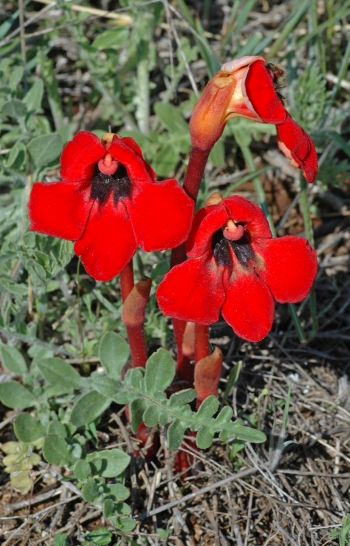Phelypaea coccinea (M. Bieb.) Poir.
Synonymy

Taxon info
Phelypaea coccinea is widespread but very scattered in SW Asia. Only two European localities are known, one in the Vardar valley S of Skopje (discovered in 1916) and one on a small limestone mountain by Lake Prespa in NW Greece (discovered c. 1990). Around 200 individuals occur in a small area in the latter locality. The large, solitary flower is presumably the reddest in Greece. Leaves of Centaurea salonitana, the likely host plant, can be seen in the foreground of the photo, while the pollinator is at work in the upper flower; it is a scaraboid beetle, Pygopleurus humeralis (det. Guido Sabatinelli).A
A. Dimopoulos, P., Raus, Th., Bergmeier, E., Constantinidis, Th., Iatrou, G., Kokkini, S., Strid, A. & Tzanoudakis, D. 2013: Vascular plants of Greece: An annotated checklist. 31: p. 352 [Plate 18.3]

